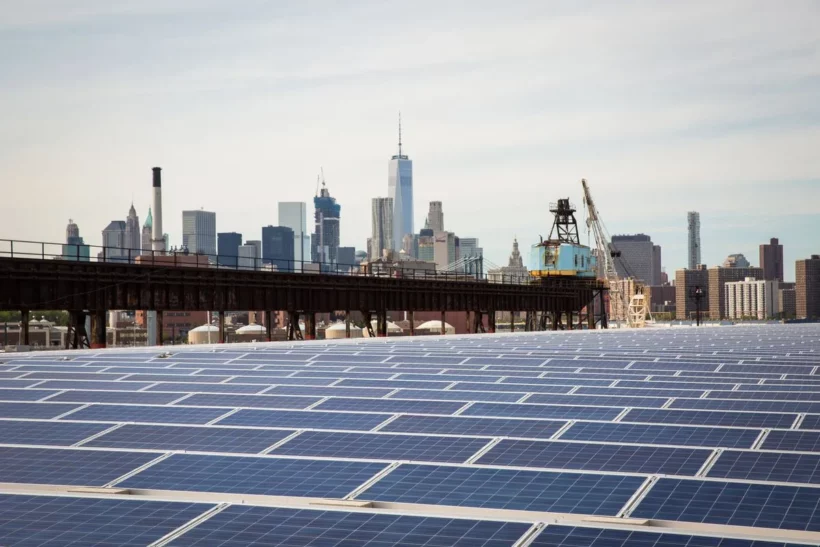According to a new report from New York State Comptroller Thomas DiNapoli, New York needs to increase its renewable energy capacity by 20 gigawatts by the end of the decade to meet the state goal of 70% electricity from renewable resources by 2030.
By Paige Bennett
New York has targeted 70% electricity generation via clean energy sources by 2030 as part of the state’s Climate Leadership and Community Protection Act (CLCPA). The state comptroller report showed that as of 2022, about 29% of state electricity is sourced from clean energy, of which about 75% was sourced from hydroelectric generation and about 25% was mostly split between wind energy and solar power.
To meet the 2030 goal, DiNapoli estimated the state will need to more than triple the renewable energy capacity of about 6.5 gigawatts installed in 2022. But in the past 20 years, the state has added just 12.9 gigawatts, as Utility Dive reported.
“New York State has rightly pursued an aggressive campaign to reduce greenhouse gas emissions to limit the most dangerous impacts of climate change,” DiNapoli said in a statement. “New York’s energy goals are attainable, but require careful attention and management to address challenges, meet ambitious deadlines and avoid future pitfalls.”
The state has faced challenges to its clean energy developments, with inconsistent funding and project cancellations. From 2005 to April 2023, there were about 28 project cancellations that would have added 1,319 megawatts, about 11.3% of contracted capacity, according to the report. Lengthy project timelines have also posed problems and are linked to delayed interconnection studies at the The New York Independent System Operator (NYISO) and local opposition to the renewable energy projects, the report noted.
In response, the state has increased funding and worked to make it more consistent. The Department of State formed the Office of Renewable Energy Siting in 2020 to streamline project permitting. The state is also reforming the NYISO interconnection process.
Moving forward, the state can expect challenges with adding more infrastructure to support a rapid increase in renewable electricity generation. Further, the report noted that the expansion of clean energy projects and infrastructure could greatly impact utility customers’ bills, and the state could consider ways to hold down costs for customers, who are already concerned about costly electricity bills.
“If the projects currently under contract to sell RECs to the State and the projects in the NYISO’s interconnection queue are able to move through the interconnection and construction process and needed transmission and distribution infrastructure is completed in a timely way, the CLCPA’s goal of generating 70 percent of the State’s electricity with renewable technologies appears to be in reach,” the report concluded.
Paige Bennett is a writer who is passionate about sustainability. She earned her Bachelor’s degree in Journalism from Ohio University and holds a certificate in Women’s, Gender and Sexuality Studies. She also specialized in sustainable agriculture while pursuing her undergraduate degree.










